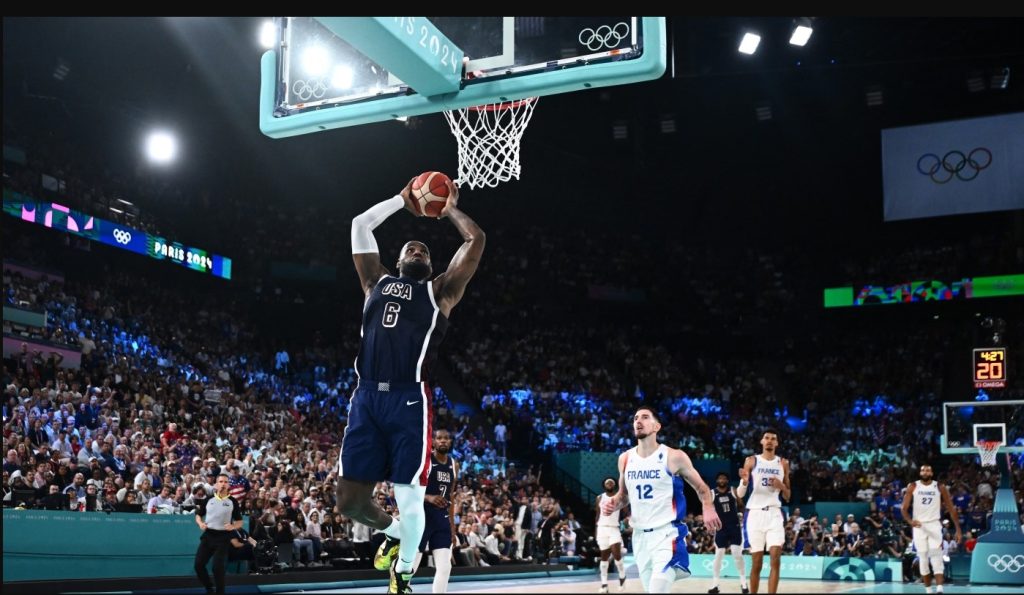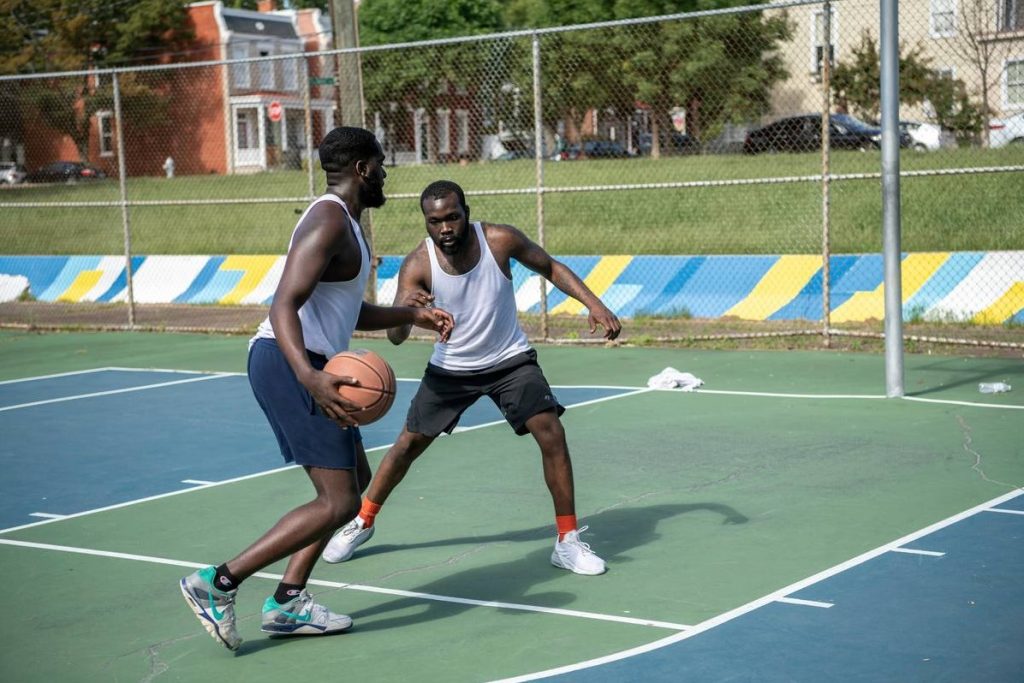How Many Quarters Are in a Basketball Game?
Quarters : Basketball is a fast-paced and dynamic sport that requires precise organization and structure. One of the most fundamental aspects of the game is the structure of time—how long is a basketball game, and how is the playtime divided? The answer is in the quarters.

Table of Contents
In this article, we will dive deep into the concept of quarters in basketball. We will explain how many quarters are played, how long each quarter lasts, the history behind the format, and how it differs across various basketball leagues. Along the way, we’ll provide useful tables to give you a comprehensive understanding of how time is broken down in the sport.
What Is a Quarter in Basketball?
A quarter in basketball refers to a defined time segment during the game. The total length of the game is divided into four quarters. The purpose of these quarters is to give players a structured amount of time to play, with breaks in between to rest, strategize, and adjust their tactics.
Key Elements of a Quarter:
| Element | Description |
|---|---|
| Length of Each Quarter | Varies by league (typically 12 minutes in the NBA) |
| Break Between Quarters | Short breaks (usually 2-3 minutes) |
| Halftime | A 15-20 minute break after the 2nd quarter |
Standard Quarter Length in Different Leagues
Quarter Length in Different Leagues
| League | Quarter Length | Total Game Time | Notes |
|---|---|---|---|
| NBA (National Basketball Association) | 12 minutes | 48 minutes | 2 halves, 4 quarters. Extended overtime periods (5 min) if tied |
| NCAA (College Basketball) | 20 minutes (2 halves) | 40 minutes | NCAA uses two halves, but standard high school rules are 4 quarters |
| FIBA (International Basketball) | 10 minutes | 40 minutes | International games follow a 10-minute format |
| WNBA (Women’s National Basketball Association) | 10 minutes | 40 minutes | Follows FIBA format. No difference from men’s rules |
| High School | 8 minutes | 32 minutes | Shorter quarters for youth and high school leagues |
| NBA Summer League | 10 minutes | 40 minutes | A variation of the standard NBA format |
How Long is Each Quarter?
1. NBA (National Basketball Association)

In the NBA, each quarter lasts for 12 minutes. This results in a total game time of 48 minutes of playing time, not including timeouts, halftime, and stoppages for fouls or reviews.
| League | Quarter Length | Total Game Time |
|---|---|---|
| NBA | 12 minutes | 48 minutes |
2. NCAA (College Basketball)
In college basketball, games are divided into two 20-minute halves, not four quarters like in professional leagues. This leads to a total of 40 minutes of playtime, but the game is divided into only 2 periods.
| League | Quarter Length | Total Game Time |
|---|---|---|
| NCAA (Men’s) | 20 minutes (2 halves) | 40 minutes |
Note: NCAA Women’s basketball switched from halves to quarters in the 2015-2016 season, with each quarter being 10 minutes long.
3. FIBA (International Basketball)
The FIBA international standard, used in international competitions such as the World Cup and the Olympics, divides games into 4 quarters of 10 minutes each. The total game time is therefore 40 minutes.
| League | Quarter Length | Total Game Time |
|---|---|---|
| FIBA | 10 minutes | 40 minutes |
4. WNBA (Women’s National Basketball Association)
| League | Quarter Length | Total Game Time |
|---|---|---|
| WNBA | 10 minutes | 40 minutes |
5. High School Basketball
At the high school level in the United States, the game is often played in 4 quarters of 8 minutes each, giving a total of 32 minutes of playtime. Different states may have slight variations in this, but the 8-minute quarter length is widely used.
| League | Quarter Length | Total Game Time |
|---|---|---|
| High School | 8 minutes | 32 minutes |
Overtime in Basketball
If the game is tied at the end of the fourth quarter, the game proceeds into overtime. Overtime periods vary depending on the league:
| League | Overtime Period Length | Notes |
|---|---|---|
| NBA | 5 minutes | Each overtime is 5 minutes |
| NCAA | 5 minutes | Similar format to the NBA |
| FIBA | 5 minutes | Follows the same overtime rules |
| WNBA | 5 minutes | Overtime is similar to the NBA |
| High School | 4 minutes | Most high school leagues play 4-minute overtimes |
Why Are There Quarters in Basketball?

The structure of quarters in basketball serves several purposes:
1. Rest and Strategy
- Quarters allow teams to regroup, implement strategies, and make adjustments based on how the game is unfolding.
- The short breaks between quarters allow players to recover and refocus.
2. TV Broadcasting and Commercials
- Quarters allow for scheduled breaks where networks can air commercials and provide commentary and analysis of the game.
3. Player Rotation
- Short, defined quarters help coaches with player rotation. Coaches can plan substitutions to keep players fresh and perform at their peak during each period.
How Quarters Affect the Flow of a Basketball Game
The division into quarters influences the rhythm and tempo of a basketball game.
- High Tempo: Teams may speed up the pace in the first few quarters to accumulate a large lead.
- Late-Game Strategy: In the final quarter (or “fourth quarter”), teams may focus on running down the clock or implementing their best plays to secure a win.
- Timeouts and Reviews: Coaches and teams can use the breaks between quarters to regroup, strategize, and take advantage of any in-game reviews or challenges.
Why Do Different Leagues Have Different Quarter Lengths?
Historical Evolution:
- In the early days of basketball, game length was not standardized. Over time, different leagues established their rules based on the needs and preferences of their players, coaches, and fans.
- NCAA originally used halves, as the college game evolved in a different manner compared to the NBA, which chose quarters for its structure.
Gameplay Dynamics:
- Shorter quarters (like in high school) may lead to faster, more intense play, as every possession counts more.
- Longer quarters (such as 12 minutes in the NBA) allow for more strategic play and time for teams to execute their game plans.
To summarize, the answer to “How many quarters are in a basketball game?” is generally four quarters, but the length of those quarters varies depending on the league. Here’s a quick recap of the most common basketball game formats:
| League | Number of Quarters | Length of Each Quarter | Total Game Time |
|---|---|---|---|
| NBA | 4 | 12 minutes | 48 minutes |
| NCAA (Men’s) | 2 halves | 20 minutes (each) | 40 minutes |
| FIBA | 4 | 10 minutes | 40 minutes |
| WNBA | 4 | 10 minutes | 40 minutes |
| High School | 4 | 8 minutes | 32 minutes |
Quarters provide structure to the game, allowing for regular breaks, rotation, and adjustments. Whether you’re watching an NBA game, a college showdown, or a high school match, understanding the role of quarters can deepen your appreciation for the sport.





